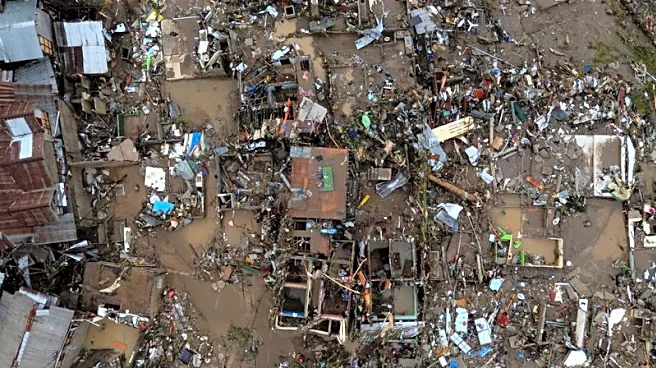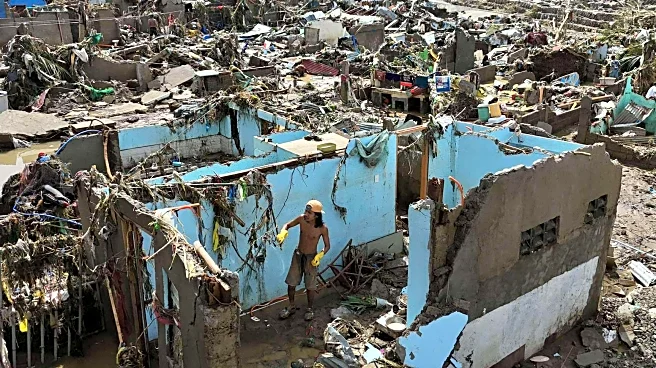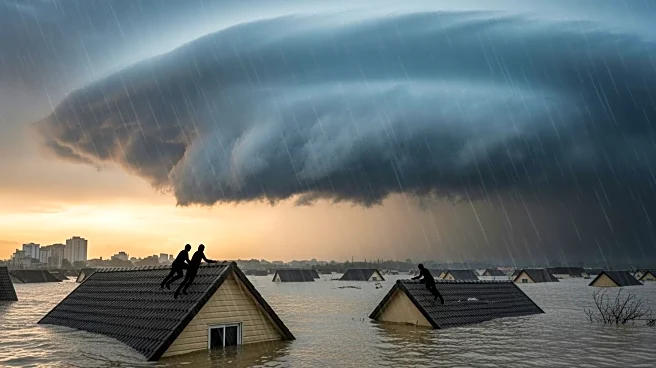What's Happening?
Typhoon Kalmaegi has resulted in significant destruction in the Philippines, with a reported death toll of at least 114 people due to severe flooding, particularly in Cebu. The storm, known locally as Tino,
is the 20th tropical cyclone to hit the country this year, highlighting the region's vulnerability to such natural disasters. The typhoon has intensified, with maximum sustained winds increasing from 150 km/h to 155 km/h, and is now heading towards central Vietnam. The storm has already caused extensive damage to residential areas in Cebu, sweeping away small buildings and leaving a thick layer of mud in its wake. Emergency responders were overwhelmed by the scale of the disaster, as many residents were caught off guard by the rapid flooding.
Why It's Important?
The impact of Typhoon Kalmaegi underscores the challenges faced by countries like the Philippines, which are prone to frequent and powerful storms. The extensive damage and high death toll highlight the need for improved disaster preparedness and response strategies. As the storm moves towards Vietnam, it poses a threat to another region already affected by flooding, potentially leading to further loss of life and property. The situation calls for urgent attention from international aid organizations and governments to provide relief and support to affected communities. The telecommunications sector plays a crucial role in disaster management, ensuring connectivity and coordination during such catastrophic events.
What's Next?
As Typhoon Kalmaegi approaches Vietnam, authorities are preparing for its landfall by canceling or rescheduling more than 50 flights and initiating mass evacuations. The Vietnamese government is likely to face significant challenges in managing the aftermath of the storm, including providing shelter and aid to displaced residents. The international community may need to step in to offer assistance and resources to help both the Philippines and Vietnam recover from the devastation. Long-term strategies for disaster risk reduction and climate resilience will be essential to mitigate the impact of future storms in the region.
Beyond the Headlines
The recurring nature of such powerful storms in the Philippines and Vietnam raises questions about the long-term effects of climate change and the need for sustainable development practices. The ethical responsibility of developed nations to support vulnerable countries in building resilience against natural disasters is increasingly important. Additionally, the cultural impact on communities that repeatedly face such devastation can lead to shifts in population dynamics and economic priorities, as residents may seek safer areas to live and work.













